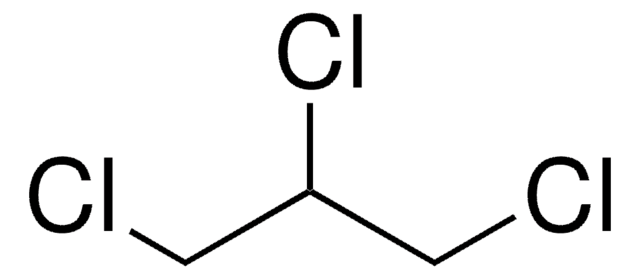49107-U
EPA 552.2 Halogenessigsäuremischung
certified reference material, 2000 μg/mL each component in methyl tert-butyl ether
About This Item
Empfohlene Produkte
Qualität
certified reference material
TraceCERT®
Agentur
EPA 552.2
Produktlinie
TraceCERT®
Analysenzertifikat (CofA)
current certificate can be downloaded
Leistungsmerkmale
standard type calibration
Verpackung
ampule of 1 mL
Konzentration
2000 μg/mL each component in methyl tert-butyl ether
Methode(n)
HPLC: suitable
gas chromatography (GC): suitable
Anwendung(en)
environmental
Format
multi-component solution
Lagertemp.
2-8°C
Verwandte Kategorien
Allgemeine Beschreibung
US EPA 500 Series methods are analytical methods for identifying and quantifying organic contaminants such as volatile organic compounds (VOCs), pesticides, synthetic organic compounds (SOCs), and trihalomethane disinfection byproducts (THMs) in raw source water, finished drinking water, and drinking water at all stages of treatment.
Anwendung
Sonstige Hinweise
Rechtliche Hinweise
Analyt
Signalwort
Danger
H-Sätze
Gefahreneinstufungen
Flam. Liq. 2 - Skin Irrit. 2
Lagerklassenschlüssel
3 - Flammable liquids
WGK
WGK 3
Flammpunkt (°F)
-27.4 °F - closed cup
Flammpunkt (°C)
-33.0 °C - closed cup
Persönliche Schutzausrüstung
Eyeshields, Gloves
Choose from one of the most recent versions:
Besitzen Sie dieses Produkt bereits?
In der Dokumentenbibliothek finden Sie die Dokumentation zu den Produkten, die Sie kürzlich erworben haben.
Unser Team von Wissenschaftlern verfügt über Erfahrung in allen Forschungsbereichen einschließlich Life Science, Materialwissenschaften, chemischer Synthese, Chromatographie, Analytik und vielen mehr..
Setzen Sie sich mit dem technischen Dienst in Verbindung.







